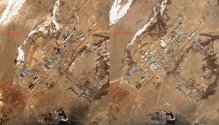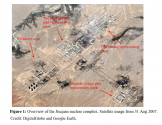antiterror13
Brigadier
Not likely though. I suspect it could be another 200Mt/year reprocessing plant given that it would be built at the proximity of the previous two plants. If it was a foreign design, it would have been built somewhere else for security reason. Or even more optimistically a domestic 800Mt/yr reprocessing plant.
The 3rd stage seems to be much more significant than I thought when I found it out.
The suspected 3rd plant is bidding for concrete & ground ventilation filter, saying that concrete should be delivered within 60 months a.k.a 5 years, potentially differing the 3rd plant with existing 2nd plant. It could mean that the 3rd plant indeed exists instead of a subordinate project of two 200Mt/year plant.
Interestingly, the bidding was labeled as "military auctioning" on the website of Hunan civilian-military fusion platform. Though it is not decisive enough to determine that China is going to use it for military purposes.
Assuming three 200Mt/yr plants operating by 2030 or an later date, China could produce around 4.5t RgPu annually by using these reprocessing plants at 75% capacity factor, namely 1,000 warheads annually if using RgPu by lowering yield-weight ratio.
So RgPu can be used to make warhead? how much RgPu is needed for each warhead? My understanding is only 3kb WgPu is needed for each Chinese warhead. The Pu is only needed as the "trigger" for much bigger blast from Hydrogen part


